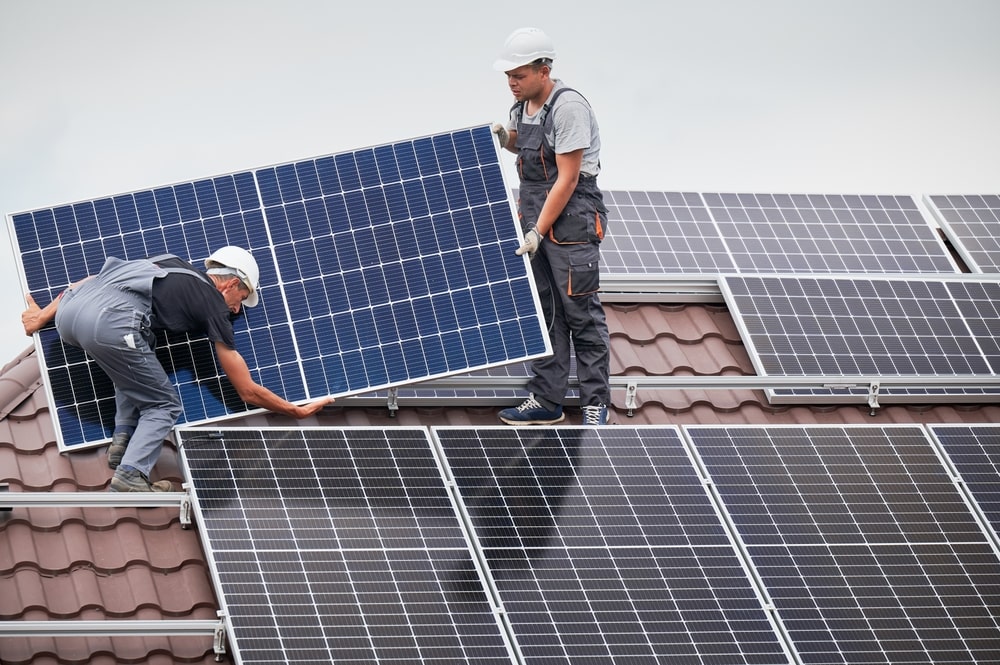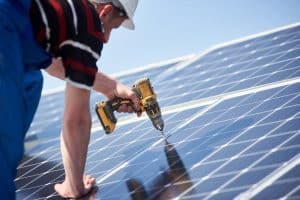Home > Energy Plans > Solar Panel System Cost
Solar Panel System Cost
Find out how much it costs to install a solar panel system, what size system you may need, and what is involved in installation here with Savvy
Author
Savvy Editorial TeamFact checked

The cost of a solar panel system in Australia will vary tremendously depending on various factors such as the size of the system, the type and quality of solar panels chosen, installation fees, and any additional components required. Understanding these costs is essential for anyone considering the switch to solar energy. By understanding the upfront expenses and potential long-term savings, you can make an informed decision about your planned investment in a solar electricity generation system.
How much does a solar panel system cost in Australia?
The cost of solar panel systems in Australia has steadily been decreasing over the years. This is mainly due to advancements in technology, making solar panels cheaper. However, increased competition (due to more people installing solar systems), and economies of scale (as our entire nation looks for cleaner energy sources) has also played a large part in reducing the price of solar electricity rooftop systems.
According to the International Renewable Energy Agency (IRENA), Australian residential solar photovoltaic (PV) systems are now some of the cheapest solar plans in the world. For example, in 2020 Australian systems were found to cost around a quarter less than in Germany. Between 2013 and 2020 the total installed costs for a solar system fell by 67% (in US dollar terms) for residential systems in Australia. As the cost of solar installations falls, it makes solar electricity generation much more accessible and affordable for many households.
A rough estimate for a 6kW solar panel system, which is a popular size for residential installations, can range from around $5,000 to $9,000 before any government rebates or incentives are applied.
Larger systems, such as a 10.5kW system (suitable for a large family home) currently cost in the region of $7,000 to $11,000 before rebates are applied.
Cost of battery storage to go with your solar system
If you wish to add a battery to store your solar-generated electricity, this will potentially add another $4,000 to $7,000 to the cost of your solar system. It’s worth noting that it is cheaper to install a battery at the same time as you install a solar rooftop system, rather than adding a battery on at a later date.
* Figures are current as of July 2023
What factors affect the cost of a solar electricity system?
The cost of a solar panel system in Australia depends on the cost of several installation components. These are:
- the size of the system you choose
- the brand and quality of the solar panels
- the type of inverter used
- the complexity of the installation on your roof
- any solar rebates you may receive from the Australian Government
- any additional components required, such as battery storage
System size:
The total capacity of the solar panel system you choose (measured in kilowatts kW) naturally affects the overall cost. Larger systems typically require more solar panels and a larger inverter, resulting in higher upfront expenses. It’s important to think about your average energy plan costs before deciding which size system will be most suitable for your household.
Brand and quality of solar panels:
Different brands and models of solar panels come with varying price tags. Higher-quality panels often come with higher efficiency ratings and longer warranties, which can influence the overall cost of your system.
Type of inverter:
The inverter is responsible for converting the direct current (DC) electricity produced by the panels into usable alternating current (AC) electricity. The type and quality of the inverter will strongly impact the cost of the system.
The complexity of the installation:
The complexity of the installation will also affect the cost of your solar system. Factors such as your house roof type (for example, metal or slate), accessibility to the roof, location of your meter box, and any additional equipment or wiring requirements can add to the overall installation cost.
Government rebates:
Australian Government solar rebates contribute to reducing the cost of solar energy systems. The Federal Government's Small-scale Renewable Energy Scheme (SRES) provides a financial incentive in the form of Small-scale Technology Certificates (STCs). As of July 2023, a typical 6.6kW solar electricity system will attract a SRES ‘rebate’ of around $2,590 based on the current STC price of $36.
Additional components:
Some solar panel systems may require additional components, such as a battery for electricity storage purposes. The inclusion of these components will add to the overall cost of the system.
How do I know what size solar system is right for me?
According to the latest data from IRENA, the International Renewable Energy Agency, the average size of a small-scale solar system installed in Australia is around 9.5kW, with a trend towards larger system capacities. This average size has increased from an average 6.6kW system prior to 2020. However, it's important to note that not every household needs to get a bigger solar system, and the system size you choose should be based on your individual energy consumption needs. These are the average-size systems recommended by solar installers depending on house size:
Common solar system sizes:
- 5kW – suitable for a unit or apartment with 1 or 2 people
- 6kW – the standard size for a small to average home in Australia
- 10.5KW – suitable for a larger home that may have a spa or pool
- 13kW+ – for very large homes and small businesses which may have very high energy consumption.
Note that some state government regulations restrict the size of a solar system permitted on a residential home, with 10kW a common limit. In addition, some solar plans also have restrictions of the amount of solar electricity you can feed back into the grid. This means if you do install a larger system, you may not be able to take advantage of higher feed-in tariffs.
What is the process for getting a solar panel system installed on my roof?
The process of installing a solar panel system on your roof in Australia can be broken down into the following steps:
- Assessment of your energy needs:
Look at your average energy use to evaluate your solar energy needs. The average electricity consumption of an Australian home is around a maximum of 24kWh per day. A 5kW solar system consisting of around 15-20 solar panels can theoretically generate around 20kWh of power a day (at maximum efficiency), which may be sufficient to offset 100% of the electricity consumption of a small average household.
- Planning for a solar system: are there obstacles?
Check if your roof is suitable for solar panels. Do you have a sufficiently large area of roof which points in the right direction to maximise solar generation? It is generally accepted the best direction to face solar panels to get the maximum possible output is directly north. Look at other rooftop installations such as air conditioning units, TV antennas and satellite dishes. Will they get in the way of a row of solar panels and reduce your usable roof space?
- Get quotes from different sources, then compare:
Contact multiple solar installation companies to get quotes for solar installation. Compare solar plans based on price, quality, warranties, and reputation.
- Design and configuration:
Work with your chosen installer to design a system that meets your energy requirements. Decide on the number of solar panels you want, the type of inverter you need, the roof fixation method which is most suitable for your home, and any wiring constraints.
- Installation and permits:
Schedule your solar installation with the installer. They will mount the panels on the roof, install the inverter, and handle all necessary permits and paperwork.
- Grid connection and metering:
The installer will connect your system to the electricity grid and if necessary, arrange with your electricity distributor for bi-directional meter installation. You will need a smart meter for your solar system, as a smart meter can measure electricity going into and out of your solar system back into the national grid.
- Commissioning and testing:
The installer will test the system to ensure it works properly and explain how to monitor its performance. This will include showing you how to check how much electricity your solar system is producing and exporting into the grid, or sending to your battery storage system.
- System activation:
Once commissioned, your solar panel system is ready to generate clean energy. You can start enjoying the benefits of solar power immediately after your system is turned on.
Helpful energy guides
Compare energy plans
Disclaimer:
Savvy is partnered with Econnex Comparison (CIMET Sales Pty Ltd, ABN 72 620 395 726) to provide readers with a variety of energy plans to compare. We do not compare all retailers in the market, or all plans offered by all retailers. Savvy earns a commission from Econnex each time a customer buys an energy plan via our website. We don’t arrange for products to be purchased directly, as all purchases are conducted via Econnex.
Any advice presented above is general in nature and doesn’t consider your personal or business objectives, needs or finances. It’s always important to consider whether advice is suitable for you before purchasing an energy plan. For further information on the variety of energy plans compared by Econnex, or how their business works, you can visit their website.








